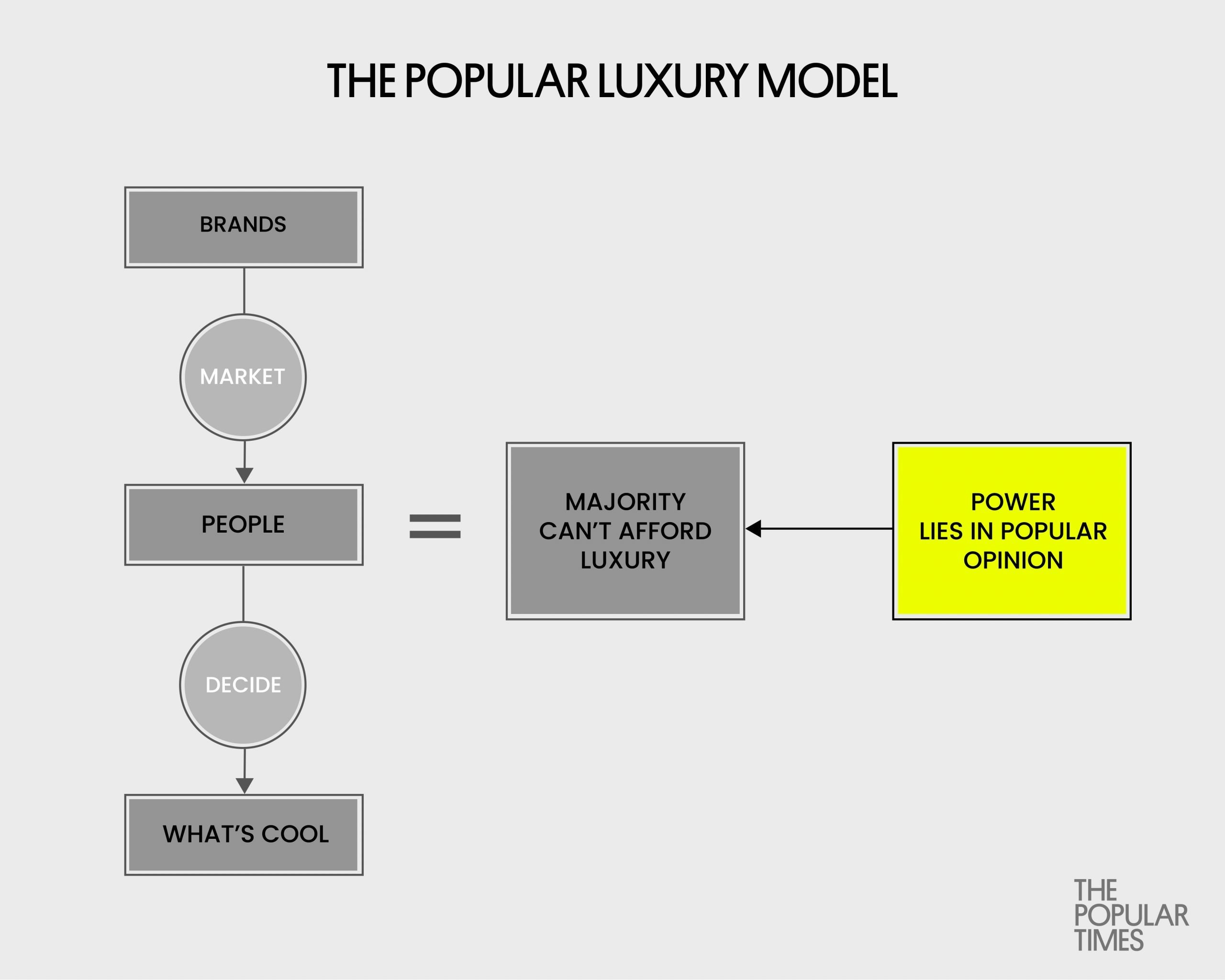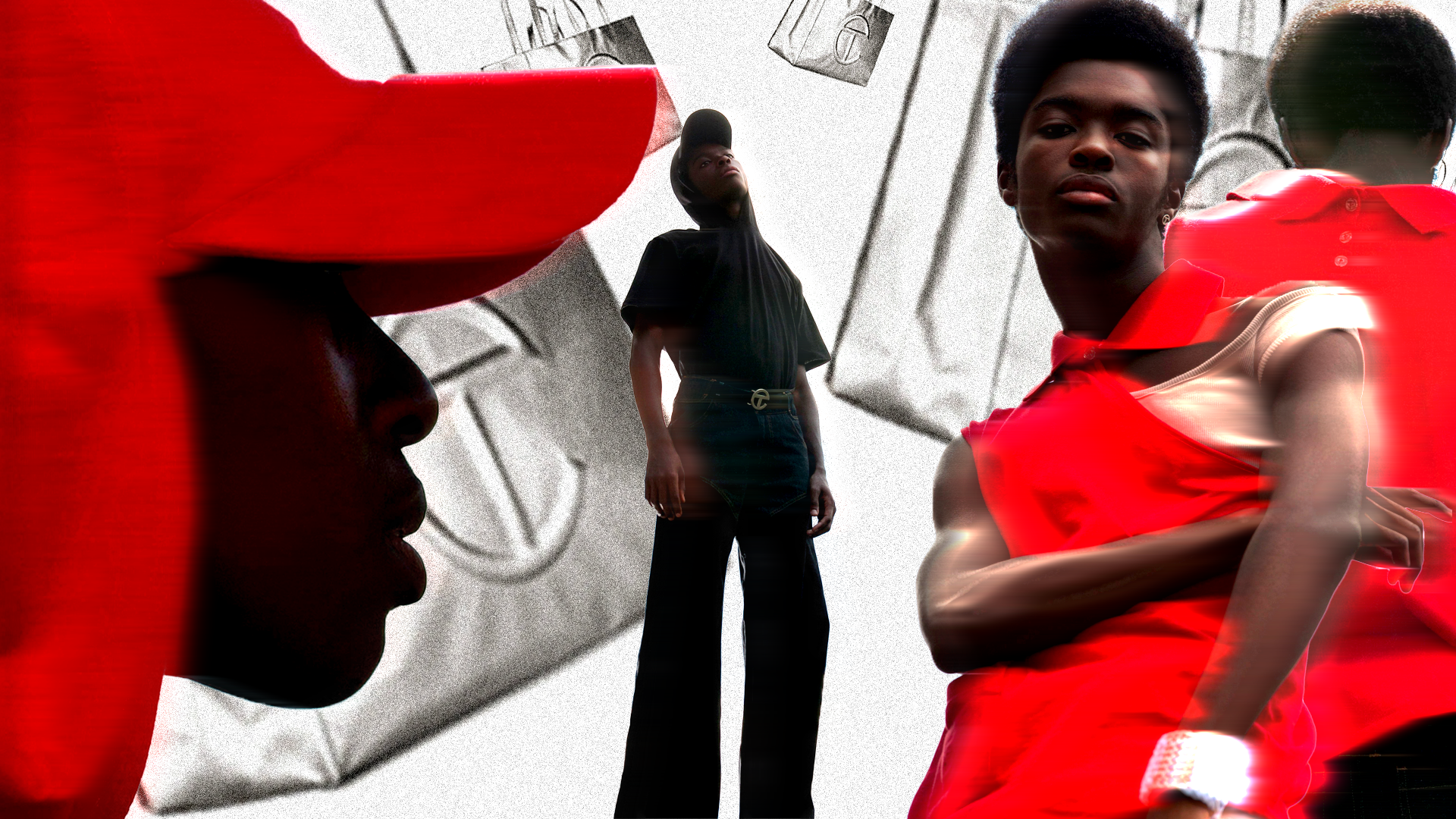This article originally appeared on The Popular Times, our partner publication on the intersection of popular culture and luxury.
Questions to guide your reading:
In the age of popular luxury, how do creators establish value that extends beyond the psychologically harmful impact of an “aspirational” brand?
If a brand can’t create value beyond “aspiration” does it have creative merit? What do consumers anyway: “aspirational” or uplifting?
Telfar has made the most successful It bag in recent fashion memory. Why?
Telfar’s slogan “NOT FOR YOU — FOR EVERYONE” questions the idea of luxury in itself. To reassure a loyal customer base about this ethos — exhausted by the bots that were snatching up merch mere seconds after every drop — Telfar announced a bag security program. “Our bag ain’t new — it’s the world that changed. Let’s keep it changing,” the announcement read.
Telfar’s questioning of luxury reflects The Popular Times’ definition of a new type of luxury: popular luxury. While traditional luxury (-2020) is created by and for the predominantly white elite, popular luxury (2020-) is defined by the motive and intents of its creators. Ultimately, popular luxury establishes that luxury is for all people of the time.
For luxury to survive, it needs to take on new lives. Ironically, luxury’s ethos has traditionally been one of “sophistication” (read: overbearing whiteness). But now, luxury must embrace new traditions to return to its position as the zenith of taste. It needs to diversify, check the pulse on the streets, incorporate social media, and become accessible to the masses.
Exclusivity is no longer marketable. Today, fans of luxury brands buy entry-level items like wallets and small purses. And, if they’re smart, they buy luxury brands that still uphold traditional standards of craftsmanship and trendiness and are trying to make their products relatively affordable.
Unbridled displays of glamor are now considered gauche and insensitive, yet there is still social capital to be gained by flaunting luxury items. An entire industry exists that must create social status via Instagram influencers by staging photoshoots, renting aesthetically-pleasing bedrooms, and more. That is because luxury’s purpose is to differentiate and alienate, which creates an aspirational class that strives to own things that signal success. As attitudes around glamor, excessive wealth, personal value, and ambition continue to be challenged, so do ideas around luxury and its role in our lives.
Brands have always needed to charm new faces in emerging social scenes and subcultures to stay hip, as their values cater to a consumer base that inspires them and not the other way around. Attainable luxury is oxymoronic because luxury relies on scarcity — and scarcity can make anything a luxury. Instead of contributing to an industry that shuts out poor, working-class people of color, Telfar prides itself on its accessibility.
But some people questioned this approach, asking: “What value does an item have if everyone has it?” or “If something is no longer unattainable, is it worth having?” Elizabeth Currid-Halkett writes in her book, “The Sum of Small Things: A Theory of the Aspirational Class,” about how online shopping and “conspicuous consumption” created a hunger in the masses for luxury items, which birthed diffusion lines meant to satiate their hunger for social status. “Clothing was particularly pivotal in the transformation and democratization of conspicuous consumption,” Halkett writes. Armani’s Armani Exchange, Ralph Lauren’s Polo, and Marc by Marc Jacobs were among the many diffusion lines that made luxury brands accessible and relatively affordable to the masses.
Other brands have used a suburban, middle-class aesthetic to upscale themselves, with Banana Republic and J. Crew among those brands mentioned by Currid-Halkett. It’s a style that says: “If you can’t buy a house, at least look like you could.

Yet, this book was written in 2017, and a lot has changed since then. Brands like Glossier, Asos, and Everlane are great examples of brands that had to appeal to the aspirational class Currid-Halkett talks about. She describes the aspirational class as those who value knowledge and social consciousness while performing their statuses by consuming ethical and sustainable products rather than diamonds and couture. Functional products go beyond having symbolic values in terms of status or craftsmanship; they also embody the social values of the zeitgeist. Today, those include sustainability, inclusivity, and accessibility.
Brands, magazines, and celebrities exist to manufacture envy, desire, and lofty aspirational goals. So, once people could no longer get Telfar shopping bags, demand increased. As such, with every new drop, the keyword “Telfar” would start trending online as a byproduct of this frustration.
People want to see themselves echoed in advertisements, but they also don’t want to spend a lot on status symbols that change every season. Many of the people wearing and vying for Telfar are young, working-class (often creative working-class) Black people. And although affordability is a difficult metric to gauge during a pandemic, Telfar costs a fraction of most luxury brand prices.
Read the full article on The Popular Times#

